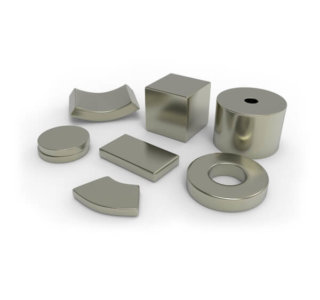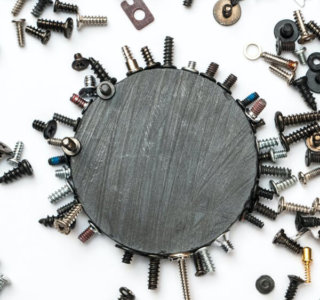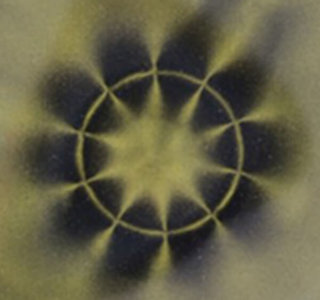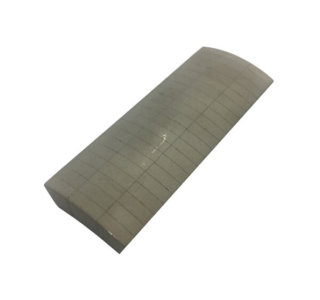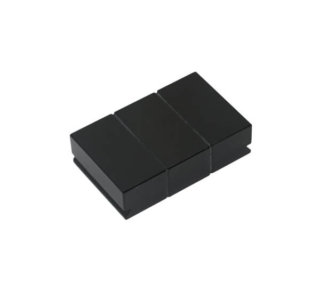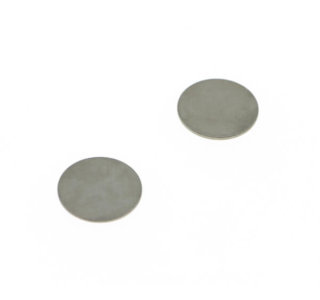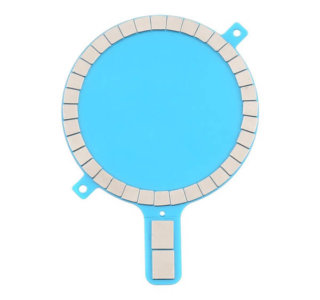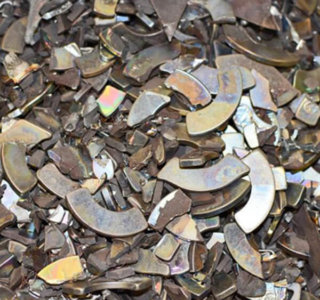A magnet is made up of atoms such as iron, cobalt and nickel, which have a relatively special internal structure that gives it a magnetic moment. Magnets can produce a magnetic field and attract the properties of ferromagnetic materials such as iron, nickel and cobalt. Different types of magnets have different uses. AOMAG would like to introduce you to the different types of magnets.
Neodymium magnet is still the most powerful and frequently used rare earth permanent magnetic material nowadays. Neodymium magnet can be classified to into sintered Neodymium magnet, bonded Neodymium magnet, and hot pressed Neodymium magnet in accordance with the manufacturing process. Each form has their different magnetic properties, then their overlapped application scope is less and under a complementary relationship. Magnet users are wondering how are Neodymium magnets made. Sintered Neodymium magnet is produced by conventional powder metallurgy process and occupies an absolute predominance in market share.
Sintered Neodymium magnet is prepared by the raw materials being melted under vacuum or inert atmosphere in an induction melting furnace, then processed in the strip caster and cooled to form Nd-Fe-B alloy strip. Alloy strips are pulverized to form a fine powder with several microns in diameter. The fine powder is subsequently compacted in an orientation magnetic field and sintered into dense bodies. The bodies are then machined to the specific shapes, surface treated and magnetized.
All material can be classified into ferromagnetism, ferrimagnetism, paramagnetism, diamagnetism, and anti-ferromagnetism according to their magnetism behavior and bulk magnetic susceptibility. Ferromagnetic and ferrimagnetic material can form permanent magnet or be attracted to magnets. Paramagnetic materials are weakly attracted to the permanent magnet. Paramagnetic materials can become very weak magnets under the action of magnetic field and its attractive force can merely detect by sensitive instruments. Diamagnetic materials also exhibit no visible reaction to the external magnetic field. Anti-ferromagnetic solid materials show abnormal behavior under applied magnetic field being dependent upon the ambient temperature. Solid material exhibits no response to the magnetic field at very low temperature, then generate weak magnetism after reached the Néel temperature.
Radial ring magnet is infinitely a preferred path for rotating machinery and magnetic coupling device compared with traditional splicing several arc magnets. Besides polar anisotropic ring magnet which made by multipole orientation technology, radial ring magnet, which also known as radially oriented ring magnet, is the most common and mature solution to produce multipole ring magnet. Radial ring magnet can be manufactured by either powder metallurgy process or hot deformation process, then powder metallurgy process can be further classified to earlier repulse orientation technology and Chinese unique rotating orientation technology according to the detailed generation mode of radially orientation magnetic field.
Multipole ring magnets are a more desirable solution to the permanent magnet motors and magnetic coupling devices in comparison with conventional splicing several arc magnets. It can be classified to isotropic type and anisotropic type. Isotropic type is generally refers to ring-shaped bonded magnets with multipole. Anisotropic type, or multipole sintered ring magnet, has always been touted as a high-end product.
Take sintered Neodymium magnets as an example, either radial orientation or multipole orientation can be served to produce multipole sintered ring magnet. Radially oriented ring magnets made by radial orientation can be directly magnetized to multipole along the radial vector. The mainstream generation mode of radial orientation magnetic field includes traditional repulse orientation technology and Chinese unique rotating orientation technology.
Sm2Co17-based magnets are still playing an irreplaceable role in the permanent magnet industry due to its unique high temperature magnetic properties and superior magnetic stability, then it always serving to the high-speed motors, electronic communication, and aerospace. High energy product magnets are the important basis to accelerate miniaturization and high efficiency of the device. Thus, obtain high performance
SmCo magnet has always been a goal since the advent of Sm2Co17.
Permanent magnet motors applied the permanent magnet as the excitation source. In addition to reducing power consumption, operational performance of the motor can be also enhanced. Permanent magnet motors utilize several kinds of permanent magnetic materials, including AlNiCo magnets, ferrite magnets, and rare earth permanent magnets. AlNiCo magnets were developed in 1930s and remarkable for high remanence, Curie temperature, thermal ability, and corrosion resistance. But AlNiCo magnets have the drawback of low coercivity and poor anti-demagnetization ability. With the advent of the rare earth permanent magnets, the marketshare of AlNiCo magnets declined sharply, then AlNiCo motor magnets are only utilized by tachogenerator nowadays.
Ferrite magnets were born in 1950s and still occupying a huge market share of permanent magnets at present. Besides superior cost advantage, corrosion resistance, and wide working temperature range, ferrite magnets are also not troubled by eddy current loss due to its high electric resistivity. Magnetic performance of ferrite magnets is relatively low, then ferrite motor magnets are mainly serving to low-cost motors which have the low requirement on volume and weight.
More than two-thirds of the rare earth permanent magnet are supplied to various permanent magnet motors. 1:5 type Sm-Co alloy, 2:17 type Sm-Co alloy, and Nd-Fe-B alloy are generally known as the first, second, and third generation of rare earth permanent magnets, respectively. Rare earth permanent magnets can be also classified to bonded magnets and sintered magnets in accordance with the production process. Bonded Neodymium motor magnets are basically in ring shape and praised for multi-pole magnetization, but it merely common in micro motors owing to magnetic performance limitations. Either sintered Samarium Cobalt magnets or sintered Neodymium magnets have low electrical resistivity, then both had to face the eddy current loss when used in high-speed motors. Eddy current loss may generate the temperature rise in the magnet, then give rise to irreversible demagnetization and further influence motor performance. Laminated magnets are a practical solution to find a balance between power and heat without changing magnet’s composition, motor’s structure, and performance.
Innovations brought by 5G technology would have more impacts on our daily life in the Post-epidemic Period, include intelligent security, self-driving technology, VR/AR, and telemedicine, thus it could be argued that 5G technology are becoming an important engine for national economy development and social informatization. Besides 5G Samarium Cobalt magnets, 5G microwave ferrite has also attracted lots of attention.
Ultra-dense Networks (UDN) is a key technology to enhance data flow of future 5G network. The realization of UDN technology must massively increase the number of 5G base stations. 5G base station utilizes a large number of isolators and circulators. Each amplifier in base station amplifier contains several isolators to ensure mismatch protection.
Isolator and circulator in 5G base station need to satisfy low volume and loss. Its consistency of performance, temperature stability, and power durability should be more ideal in the meanwhile. As the core component of isolator and circulator, 5G microwave ferrite, also known as garnet, need to have low electromagnetic loss, relatively higher Curie Temperature and consistency of performance. The massive growth of 5G base station is also accelerating a huge rise of isolator and circulator. Then correspondingly, demand for 5G microwave ferrite has increased geometrically in the last two years.
Apple Inc. launched MagSafe accessories with their new iPhone 12 series. In fact, MagSafe is a brand of breakaway magnetic charging cables for the MacBook before, and now extend to the iPhone 12 series. Teardown reports showed that an assembly which includes a MagSafe magnet array and alignment magnet is embedded in the back of the phone and around wireless charging coil. Therefore, this assembly can totally solve alignment issues seen in previous products.
Either researchers or magnet manufacturers have been put many efforts into the recycling of bulk sintered Neodymium magnet wastes due to the concerns of environmental protection and rare-earth resource supplies. The total rare-earth content in waste magnets is certainly around 30wt% which much higher than most natural mines. In the meanwhile, waste magnets are usually maintaining original magnet’s physical and chemical properties even with deterioration of the properties on its surface due to corrosion or contamination.
Sintered Neodymium magnet wastes are mainly come from industrial wastes and end-of-life wastes. Industrial wastes are produced through the entire production process of sintered Neodymium magnets, especially furnace slag during melting and strip casting, ultrafine powder during jet milling, defective parts during compaction and sintering, and scraps or sludge during the machining process. The machining process yields most of the industrial wastes of sintered Neodymium magnets. On the other hand, end-of-life wastes are come from the out-of-service devices which contain sintered Neodymium magnets.
Numerous solutions have been developed to recycle bulk sintered Neodymium wastes which contain machining scraps and end-of-life waste magnets. The main recycling techniques can be divided into waste magnets to recycle sintered magnets and waste magnets to magnetic powder or bonded magnets.
AOMAG Magnetics is professional manufacturer of magnets, which are made of NdFeB magnets, ferrite magnets, rubber magnets, alnico magnets,Smco magnets meeting the standard of IATF 16949:2016, ISO 9001:2015 , SGS , ROHS, REACH. I believe our price will be much more competitive than your current supplier for the same quality products.Please don't hesitate to contact me if there is any item you are interested.






